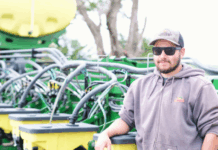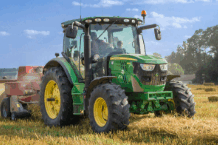Greg Doering, Kansas Farm Bureau
I recently received an email from a local car dealer offering to buy my truck. Normally I just delete these types of pitches, but in this instance curiosity got the best of me. I opened the email and quickly discovered my gently used vehicle was worth more than I expected — a lot more.
The offer was almost exactly what I’d paid for the truck about three years ago, and it was just a few thousand less than a comparable new vehicle. It’s just one of the latest examples of the pandemic’s weird effects on nearly everything, starting with toilet paper and now cascading through every sector of the economy.
A shortage of computer chips, lower factory output last year, surging demand and a host of other things have boosted the value of my truck. A similar story is playing out with lumber and the housing market.
This logistics logjam includes agriculture, but the disruption today is going mostly unseen by consumers. Hiccups in the supply chains have created all sorts of shortages across the ag industry for things like fertilizer, herbicide and even the plastic wrap used for hay bales.
Not all of these are directly related to COVID-19, but it served as the first domino in the chain reaction that’s led to higher prices for just about everything needed to make anything. Other factors include the deep freeze across the middle of the country in February that curtailed all sorts of industrial capacity and the beginning of a post-pandemic demand surge that comes with a return to more normal lifestyles.
While these are just some of the proximate causes of current shortages and price increases, the root cause is the decades-long effort to squeeze every extra penny out of the process between a product’s origin and its consumption.
Greatly oversimplified, this system fine tunes every part of the production process while using forecasting to figure out just how much product it needs to make, ship and place on a shelf as close to the time it’s purchased as possible. It’s often called “just in time delivery,” for this reason.
When it works, which is the vast majority of the time, it lowers prices for everything by reducing the need to hold inventory. When there’s a once-in-a-century pandemic on top of other more regular interruptions, prices go up for everything.
Overall, we’ve benefitted greatly from this efficiency. It’s one of the reasons Americans enjoy an abundance of affordable options for our food, electronics and other goods. The downside to having only the appearance of abundance and not an actual abundance.
In time, the market will correct. High prices will cure high prices, either through reducing demand or enticing new competitors to increase supply. Of course, it’s a little easier to be optimistic if you’re not looking for a used truck, trying to buy (or build) a house or securing farm inputs. Right now, I’ve still got my truck. I’m holding out a little bit longer on the off chance I can make an even trade for a brand new one.
“Insight” is a weekly column published by Kansas Farm Bureau, the state’s largest farm organization whose mission is to strengthen agriculture and the lives of Kansans through advocacy, education and service.
Copyright © 2021 Kansas Farm Bureau, All rights reserved.
News from Kansas Farm Bureau



